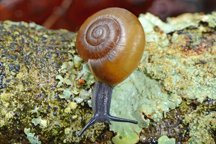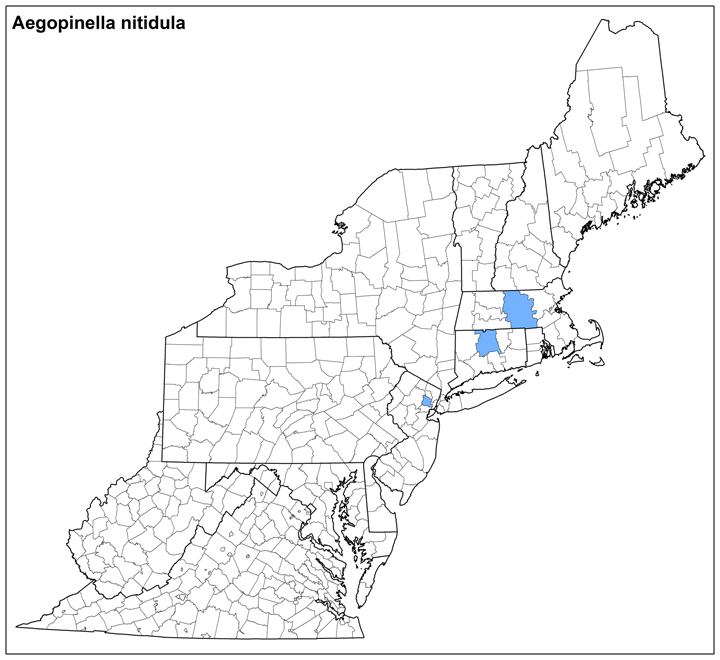Land Snails

Photo: Aegopinella nitidula. Image © Roy Anderson
Click photo to enlarge.
Aegopinella nitidula (Draparnaud, 1805) (non-native)
Family: Zonitidae
Common name: Waxy Glass Snail
Identification
Width: 8-10 mm
Height: 4-5 mm
Whorls: 4.5
Aegopinella nitidula has a pale yellowish shell that is “waxy rather than glossy” according to Kerney and Cameron (1979). Other authors report a medium brown or reddish color, or occasionally greenish (e.g. Anderson, 2016). The shell has an open umbilicus, the sutures are well-defined, and the final quarter-whorl expands moderately to the aperture. There are regular growth lines and faint spiral striae. The animal is gray, sometimes quite dark above, lighter below. Its reproductive anatomy is distinguished from close relatives by a smaller, un-segmented penis.
Ecology
This unassuming snail prefers mesic habitats with forest and rocks, and sometimes disturbed areas. This snail is a facultative predator of other land snails and in a field and laboratory study appeared to favor Nesovitrea hammonis (Strøm, 1764) as prey (Mordan, 1977). At a field site in Great Britain, peak egg-laying by A. nitidula was March-August (Mordan, 1978). Young were present year-round but most abundant July-October, suggesting a two-year life cycle (Mordan, 1978). Mean density was approximately 14/m².
Taxonomy
Previously known as Retinella nitidula.
Distribution
Regional museum records for this Northwest European species are from three locations, in the late 1800’s – greenhouses in Hartford, CT, and Worcester, MA, and a yard in Essex, NJ. However, Forsyth et al. (2001) claim the first confirmed report of this species in North America, in Vancouver, B.C., Canada.
Conservation
NatureServe Global Rank: G5, Apparently secure.
Ken Hotopp, 9/2017
Range Map (click to enlarge)



